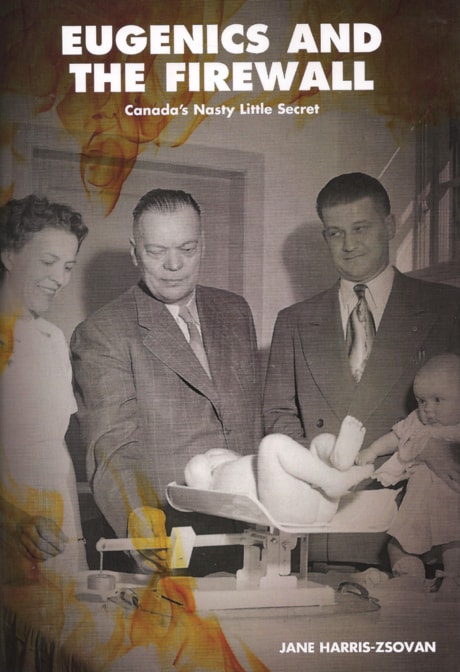Any Albertan who thinks this province’s sexual sterilization laws were in keeping with the rather draconian 1930s and ’40s needs to re-examine history, says a Lethbridge author.
Jane Harris-Zsovan, who wrote Eugenics and the Firewall: Canada’s Nasty Little Secret, said Alberta and B.C. were the only two regions in the entire British Commonwealth that allowed the practice of forcibly sterilizing “defectives.”
In fact, England’s parliament declared the practice unconstitutional in the early 1930s.
While B.C. used eugenics sparingly, sterilizing only a few hundred citizens, Alberta seized the opportunity from 1928 to 1972 to target nearly 3,000 “undesirables,” including the mentally disabled, chronically ill and sexually promiscuous.
Many of these 2,832 sterilizations were done at Red Deer’s Michener Centre, said Harris-Zsovan.
The author has been interested in Alberta’s dark eugenics history since she overheard, as a young girl, her parents discussing a neighbour’s son who they suspected was sterilized.
Through her year of online research, Harris-Zsovan found that many of the targeted Albertans were forcibly sterilized outside the boundaries of Alberta’s eugenics regulations. This means Alberta repeatedly broke its own laws in a bid to forcibly take away the reproductive rights of an ever-widening circle of citizens.
One of the targeted was Leilani Muir, who successfully spearheaded a court battle in 1996 to gain financial compensation from the Alberta government. Having a low IQ score and being a Catholic of Polish-Irish background were given as reasons why Muir could not raise children properly — as was her growing teenage interest in the opposite sex.
She was sterilized at age 14 without her knowledge, during an appendectomy.
Muir was later found to be of normal intelligence. While she should never have been placed in Red Deer’s Provincial Training School for Mental Defectives (now Michener Centre), as someone who was institutionalized, she never should have been sterilized in the first place, said the author and freelance journalist.
“The law was meant for people who were leaving an institution and were going out into the community.”
But rather than abiding by these parameters, the Alberta eugenics board travelled the province, seemingly in search of more undesirables.
“That surprised me,” said Harris-Zsovan, who discovered documents that showed a local unwed mother who was being assisted by a Lethbridge charity was also sterilized without her consent.
“If I found this one case, there must have been many, many more. . . .”
The practice of eugenics, which rose in popularity after being advocated in 1883 by Francis Galton, a cousin to Charles Darwin, was also big in the U.S. for a time — although American support began dying down after Hitler’s Second World War excesses became known.
But Alberta’s Sexual Sterilization Act was only repealed in 1972. And Harris-Zsovan, whose book was issued by J. Gordon Shillingford Publishing Inc., believes Alberta was sucked in for so long in large part due to the religious zeal of Bible Bill Aberhart.
Former premier Aberhart not only led Alberta’s Social Credit government between 1935 and 1943 but had a huge influence over people in this province — including the next premier, Ernest Manning — through his fire-and-brimstone radio show.
The eugenics proponent and staunch Baptist truly felt he was doing the Lord’s work, said Harris-Zsovan, who believes Aberhart managed to convince a lot of Albertans that his views were the right ones.
For years, his radio show “was the only game in town on the farm. There wasn’t much else to listen to,” she added.
So far, Albertans have mainly had two reactions to her 288-page book — either expressing astonishment that Alberta’s shameful eugenics history isn’t being taught in schools or discomfort at her airing of this province’s dirty laundry.
But Harris-Zsovan believes it’s important to learn from history.
“This is what happens when people are not made accountable, and when the rights of vulnerable people are considered less important than other people’s rights.”
Eugenics and the Firewall: Canada’s Nasty Little Secret is available at Chapters for $24.95.
lmichelin@www.reddeeradvocate.com
